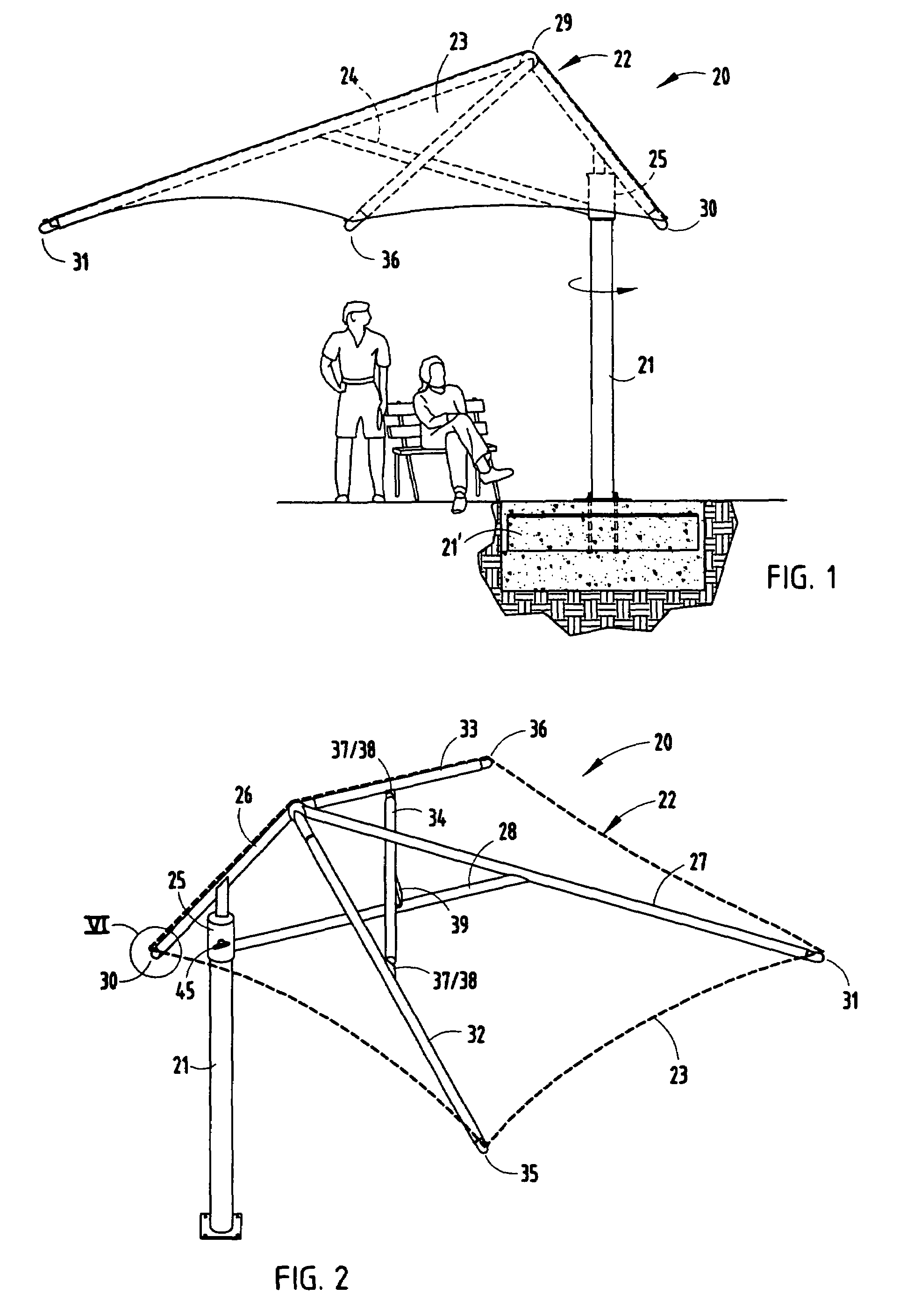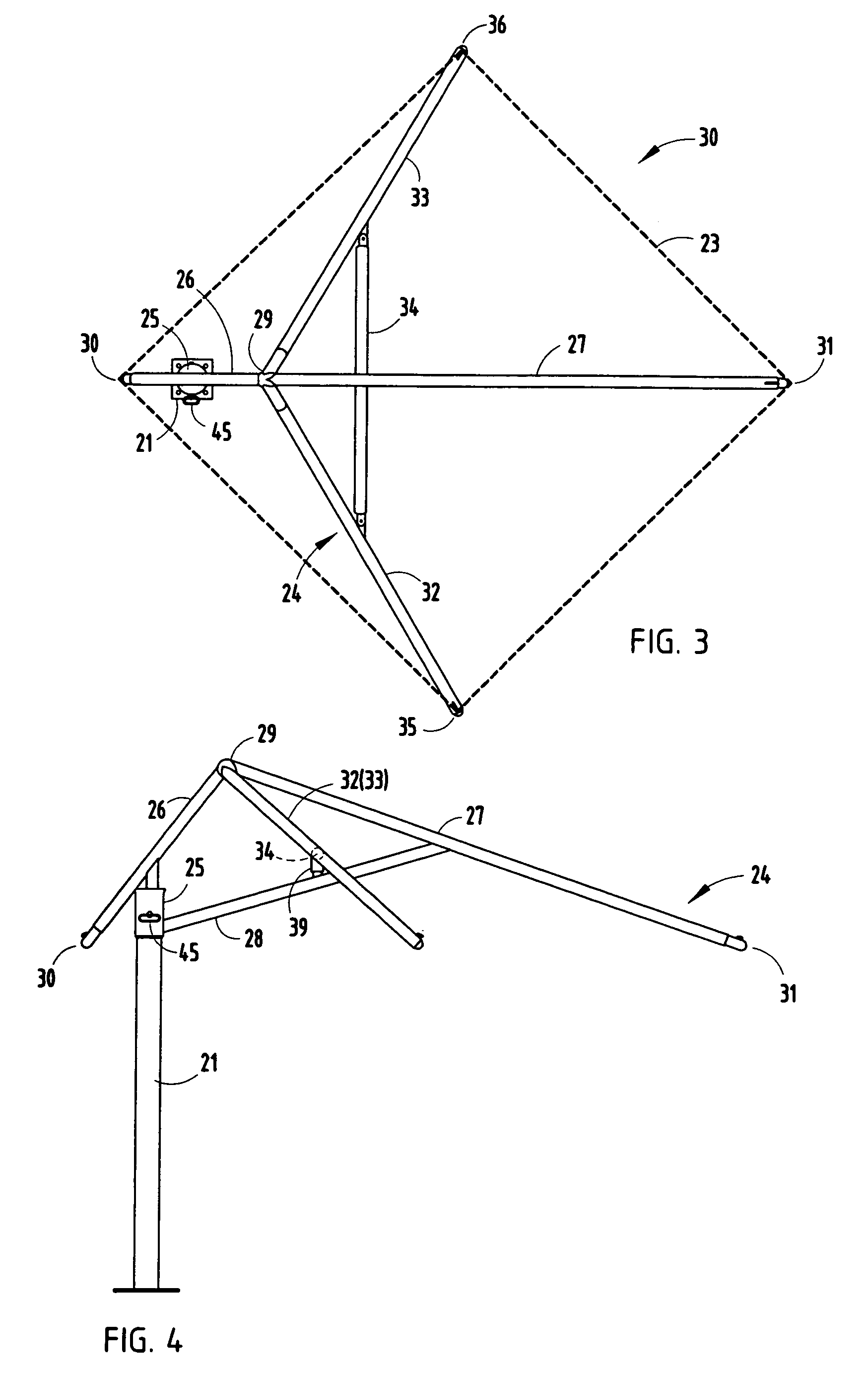Adjustable shade-providing building structure
a building structure and shade technology, applied in the direction of umbrellas, sunshades, walking sticks, etc., can solve the problems of not being intended, not having sufficient structure to withstand high wind, and not being able to meet building codes
- Summary
- Abstract
- Description
- Claims
- Application Information
AI Technical Summary
Benefits of technology
Problems solved by technology
Method used
Image
Examples
Embodiment Construction
[0031]A shade structure 20 (FIG. 1-2) includes a vertical column 21 and a roof 22 having a cover 23, a framework 24 supporting the cover 23, and a mount 25 attached to a top of the column 21 and rotatably supporting the roof 22 on the column 21. The framework 24 includes a triangularly-shaped main beam arrangement (FIG. 4) comprising a plurality of beams 26-28 secured together to form a triangular that lies in a vertical plane and that defines a peak 29 and opposing first corners 30 and 31, with the mount 25 being located between the peak 29 and one of the opposing corners 30 and 31. The framework 24 further includes a pair of transverse beams 32 and 33, stabilized by a transverse bracing beam 34. The inner ends of the beams 32 and 33 are secured to the triangular main beam arrangement at the peak and include ends that define opposing outer (lateral) second corners 35 and 36 of the shading arrangement. The bracing beam 34 (FIGS. 9-10) includes longitudinally-extending end flanges 37...
PUM
 Login to View More
Login to View More Abstract
Description
Claims
Application Information
 Login to View More
Login to View More - R&D
- Intellectual Property
- Life Sciences
- Materials
- Tech Scout
- Unparalleled Data Quality
- Higher Quality Content
- 60% Fewer Hallucinations
Browse by: Latest US Patents, China's latest patents, Technical Efficacy Thesaurus, Application Domain, Technology Topic, Popular Technical Reports.
© 2025 PatSnap. All rights reserved.Legal|Privacy policy|Modern Slavery Act Transparency Statement|Sitemap|About US| Contact US: help@patsnap.com



